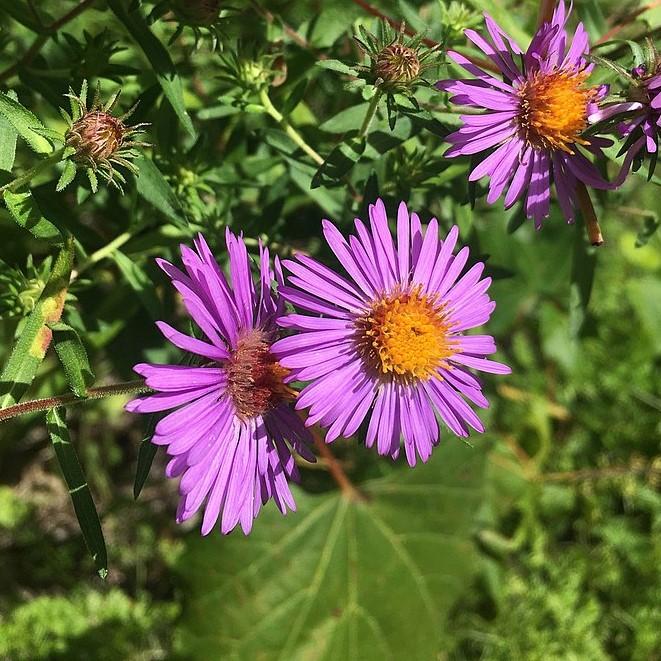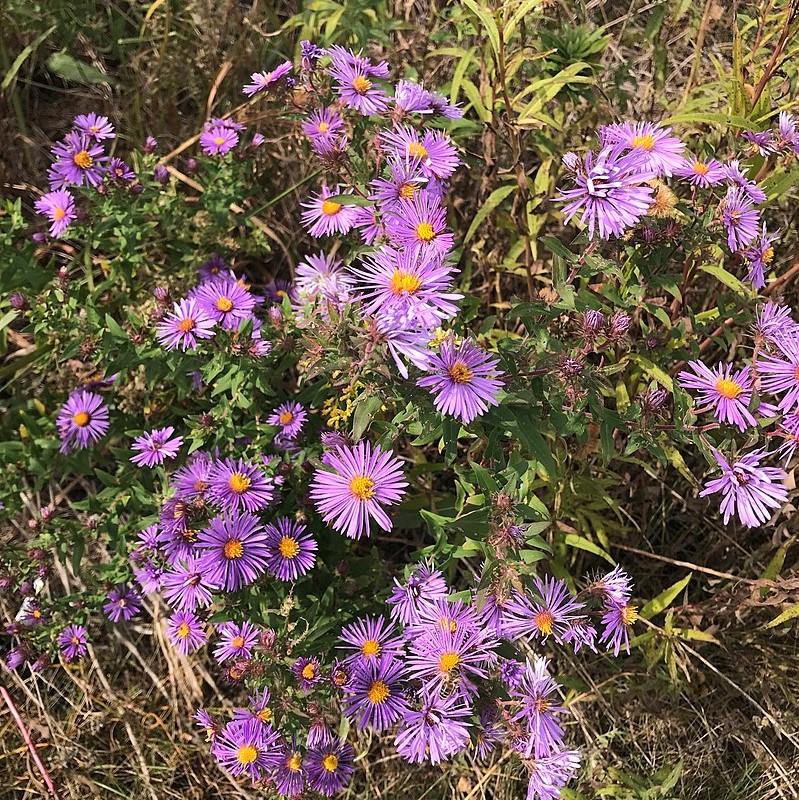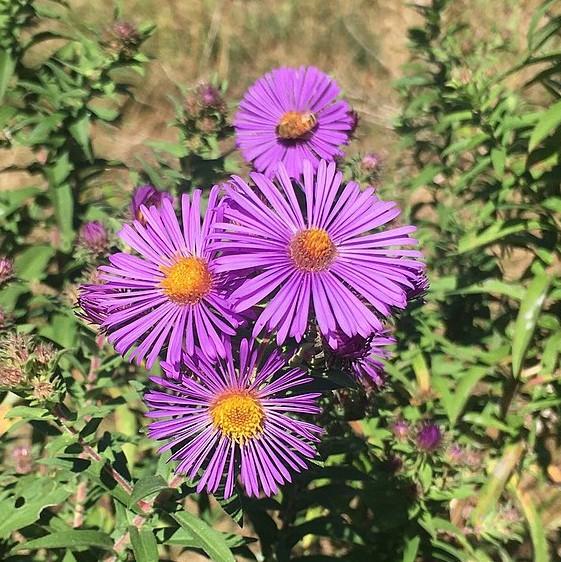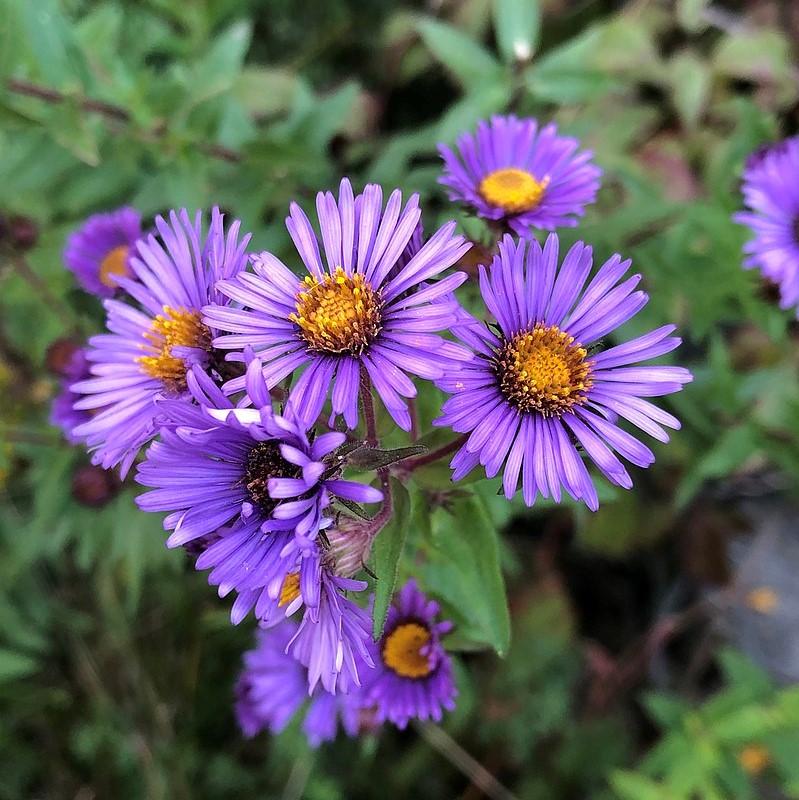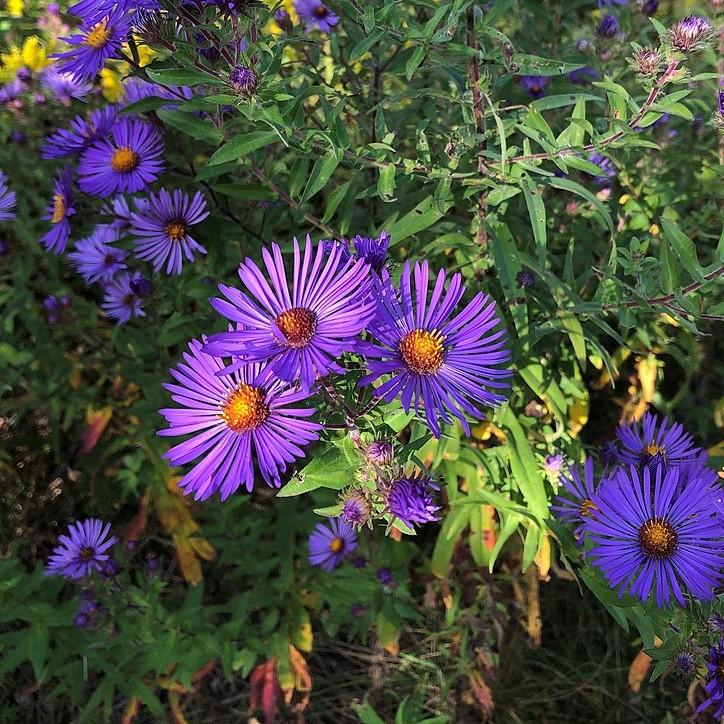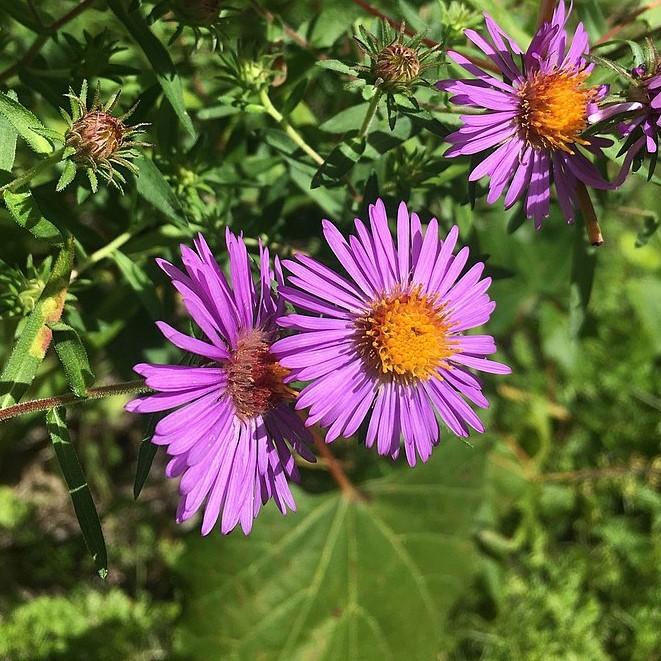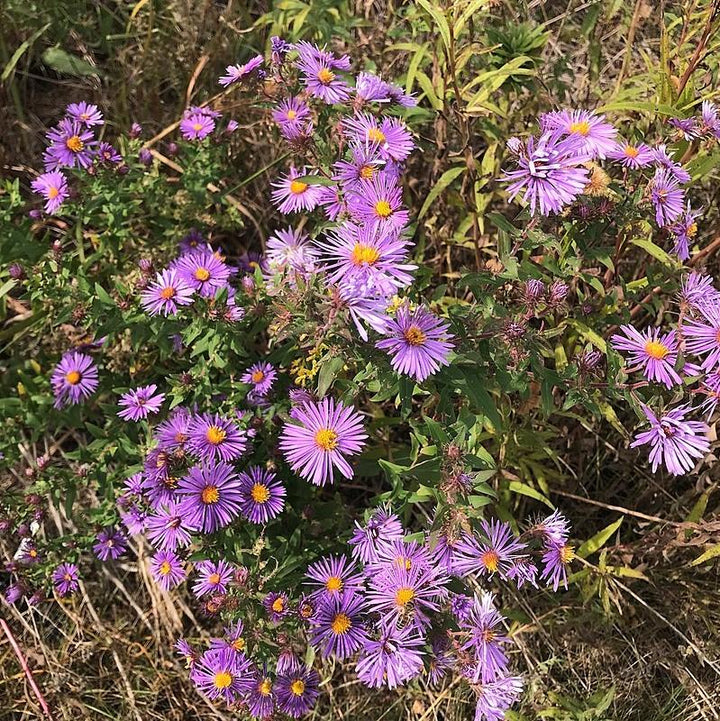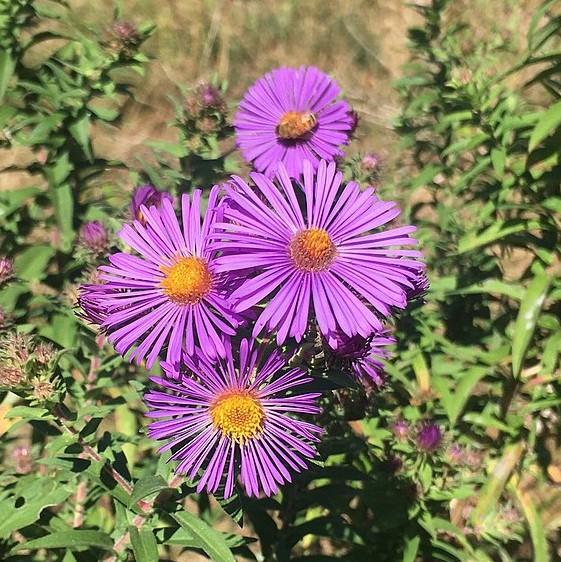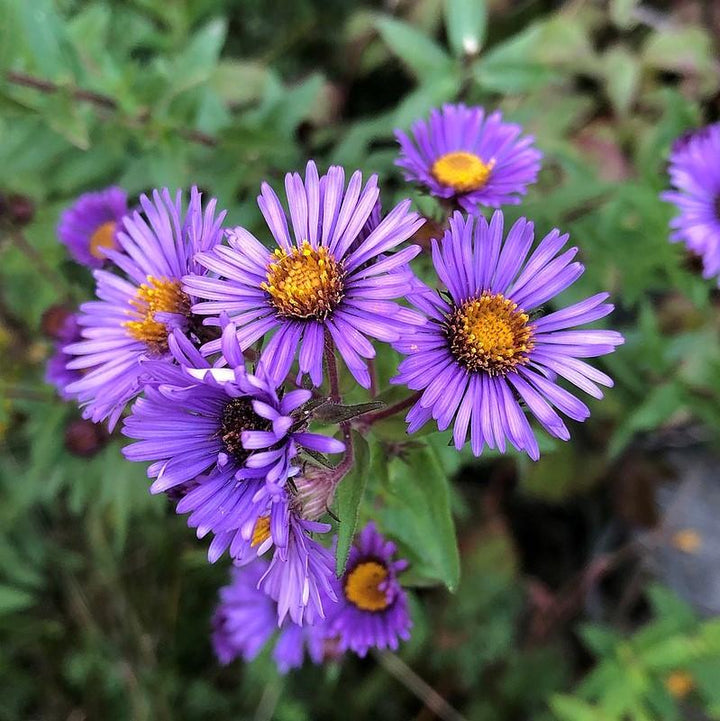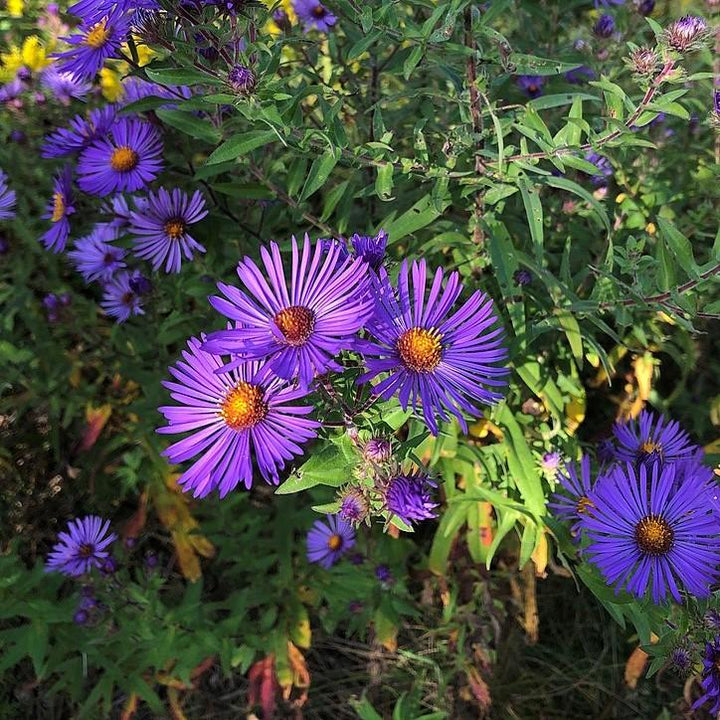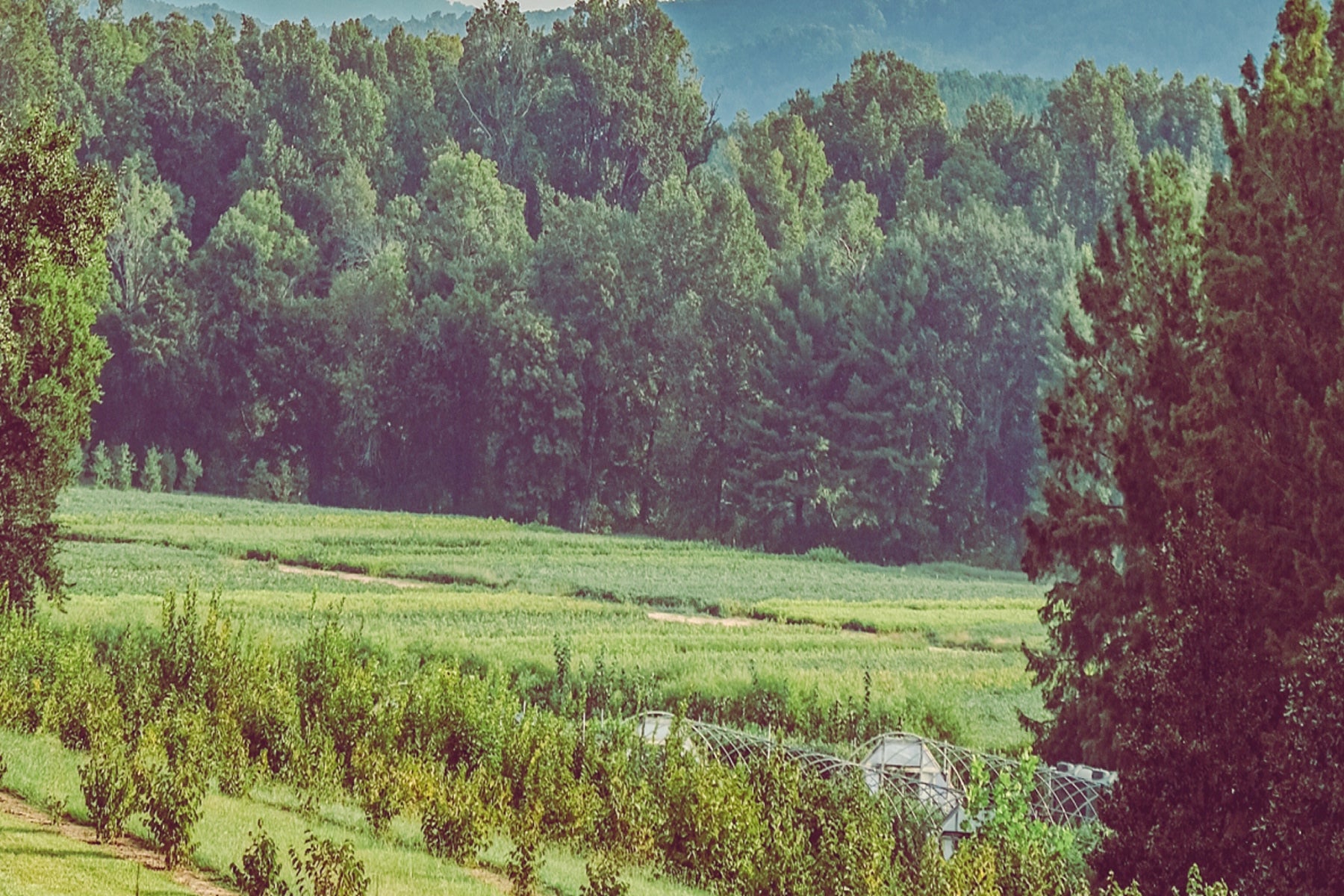Hella Lacy New England Aster is a smaller cultivar of the upright native perennial growing up to 3-4 feet with hairy stem and rough, hairy lance-like green leaves that are deer resistant. The 'Hella Lacy' flowers are smaller but still have the purple with orange-yellow centers which start to bloom in late summer and typically continue until the first frost. Its flowers are attractive to butterflies and bees. Grows best in full sun and rich, moist soils. Resistant to powdery mildew and drought tolerant.
Aster novae-angliae provides nectar in fall and acts as a host for the Pearl Crescent, checkerspot butterflies, and various moths. Learn more about planting for butterflies with Georgia natives with this brochure.
New England Aster has a history of being used as a poultice to treat pain and fever, or as a tea to relax respiratory spasms or asthma.*
|
Type: |
|
|
Origins: |
N. America, SE Native |
|
Height: |
3’ - 4’ |
|
Spread: |
3’ - 4’ |
|
Spacing: |
4’ |
|
USDA Hardiness Zone: |
4 - 8 |
|
Culture: |
|
|
Bloom Color: |
Purple |
|
Season of Interest: |
MAINTENANCE NEEDS: Low maintenance plant. Cut stalks after flowering to prevent self-seeding.
LANDSCAPE USES: Accents or Group Plantings, Borders, Woodland Gardens, Wildlife Gardens, Naturalized Areas, and Containers.
COMPANION PLANTS: Fleabane, Stoke's Aster, Fountain Grass
IMAGES: Andrew Sebastian, Symphyotrichum novae-angliae flower (24), CC BY 4.0, (2) someplant, Symphyotrichum novae-angliae flower (27), CC BY 4.0, (3) Andrew Sebastian, Symphyotrichum novae-angliae flower (35), CC BY 4.0
*As plants have ranges in appearance they may not appear as the images shown.
*ServeScape does not take any responsibility for any adverse effects from the use of plants. Always seek advice from a professional before using a plant medicinally.

